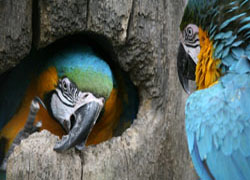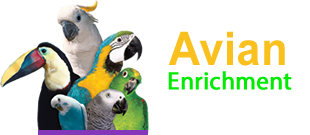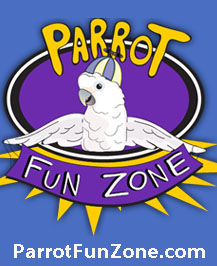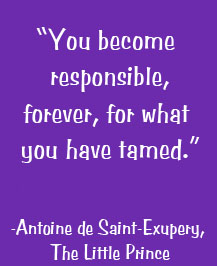Why Birds Need to Chew
 Exploratory chewing is the way young parrots start to interact with, investigate and learn about the world around them. Chewing is fun but it also helps to answer questions such as:
Exploratory chewing is the way young parrots start to interact with, investigate and learn about the world around them. Chewing is fun but it also helps to answer questions such as:
- What is in here?
- Is this food?
- Would this make a good nesting material?
Chewing is a natural, instinctual behavior that is also associated with foraging and nest building. Nests are often burrowed into tree trunks or thick branches, a task which requires a lot of chewing and shredding.
Chewing is nature's way of keeping a parrot's beak fit and trim. A bird's beak, just like human fingernails, is continually growing (up to 3" per year). Just consider all the functions on which a bird must rely upon his beak to accomplish and you will understand how critical it is to provide your bird with chewing opportunities to help maintain his beak:
- Eating
- Gripping
- Climbing
- Preening
- Defense from predators
- Courtship play
- Nest building
- Feeding young
The drive to chew can create some problems if a bird is left to roam outside of his cage without supervision. Many an antique, doorframe, window sill and favorite chair have fallen prey to the almighty beak. Unsupervised exploratory chewing also poses extreme dangers to our birds if they decide to chew on toxic plants, through live electrical cords, etc. (Household Dangers)
Although you can't halt a bird's drive to chew, this instinct can be re-channeled towards more appropriate objects such as:
- destructible chew toys
- foraging toys
- hard shell nuts
- natural perches
- calcium blocks or cuttlebone
Providing acceptable chewing outlets will be of great benefit to your bird's physical and emotional health as well as to your own peace of mind.







Comments powered by CComment